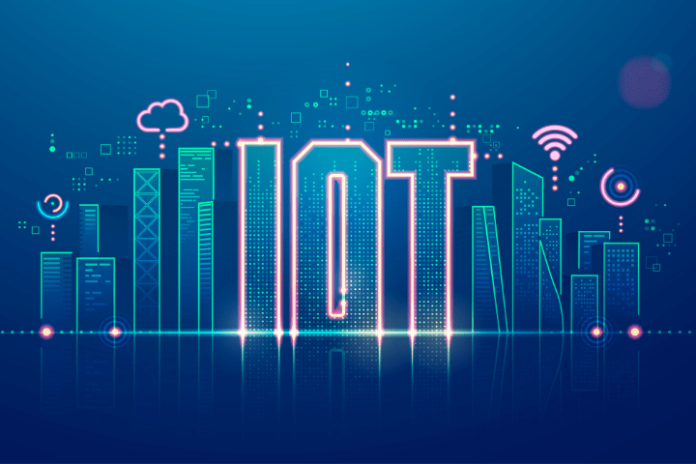Characteristics of IoT: The Internet of Things (IoT) is a game-changing idea that has emerged in recent years, drastically altering the technological landscape. It differs from more conventional models of technology in several key respects. These essential characteristics, taken as a whole, describe the Internet of Things (IoT) and its profound influence on many parts of our contemporary society. The breadth and potential of the Internet of Things (IoT) to transform connection, data interchange, automation, and many other areas requires an understanding of these basic characteristics.
IOT (Internet of Things): What Is It?
The core idea behind the Internet of Things (IoT) is a system of interconnected physical items, or “things,” that have sensors, software, and other cutting-edge tech built right in. These devices may share data with each other and other systems thanks to their internet connectivity. Everything from common household items to intricate pieces of industrial equipment can be connected through the Internet of Things (IoT). By 2025, experts predict that there will be an incredible 22 billion linked gadgets. Nearly more than seven billion of them are available on the internet right this second. Oracle is part of this ever-changing scene because of its collaborations with a wide range of device makers.
For what reasons is the IoT crucial?
The IoT’s status as a foundational technology of the 21st century has become increasingly apparent in recent years. A new age of effortless communication between people, processes, and things has begun with the capacity to embed gadgets inside commonplace objects, such as baby monitors, refrigerators, cars, and thermostats.
With the convergence of mobile technology, big data, analytics, cloud computing, and affordable computing, inanimate things may now exchange and accumulate data with little to no human involvement. Every contact between interconnected entities can be recorded, monitored, and optimized by digital systems in this hyperconnected world. The merging of the digital and physical spheres has created an environment where the two can work together.
Characteristics of the Internet of Things (IOT)
1. Connectivity
Access to the Internet is a must for the Internet of Things. To guarantee that, anybody, anywhere, can connect at any time, all IoT components should be seamlessly integrated into the IoT infrastructure. Within the Internet of Things, devices such as sensors, gateways, and routers create connections in the same manner that humans do with their phones and other electronic devices.
2. Intelligence and Identity
It is critically important to get useful conclusions from the produced data. A sensor may produce data, but its real worth is in the analysis of that data. Furthermore, every Internet of Things device has a unique identifier, which allows for efficient equipment tracking and makes status requests easier when necessary.
3. Scalability
Over time, the number of linked parts in the IoT world keeps getting bigger. So, an IoT system must be able to easily manage this quick increase. Handling and organizing data well becomes very important when we think about the huge amount of information created.
4. Dynamic Adaptation and Self-Adjustment (Complexity)
Being able to change for new situations is something special needed in the field of IoT devices. They must do this as things keep changing around them. For example, a watch camera can learn the difference between day and night light. It then changes its settings as needed. This natural skill makes them better and helps in many situations.
5. Identity of Things
An internet device gets a name and number to be identified. An important part of loT is giving a name to the device. We can pick what device connected to the internet we want an order sent from using the identity. Different devices need different regulating powers based on the type of data. To use safety steps like passwords, it’s very important to give a different name to every device. We can keep gadgets safe in a few ways. One example is giving them special internet addresses and using fingerprint sensors and face-scanning programs to check who should get into it.
6. Self Upgradation
It’s very important to update software regularly. But remembering that can be very hard. So, IoT devices can update themselves without help from a person using their AI skills. It also helps to create a network that can add new IoT devices without any problems. If the first part is already ready, then this tech can start working again without any extra wait times.
7. Architecture
There can’t be just one standard form for the architecture of Things on the Internet (IoT). Instead, it should be a mix of things. There can be different stuff from many makers all together in the IoT network. Understanding how powerful the Internet of Things (IoT) can be relies on many different but helpful areas of engineering working together.
8. Safety
Because we use lots of gadgets on the internet, there’s a chance that our private information could be at risk. People could get really hurt because of this weakness. So, keeping data safe should be the most important thing. As there are many devices involved, the protection of the network and the use of IoT should be treated as very important.
Conclusion
The Internet of Things (IoT) is known for having linked, safe and flexible networks. To use the power of Internet stuff (IoT) for a better future, it’s important to know what makes IoT special. The power to add new technology, give strong real-time talk and link devices easily is what makes the Internet of Things (IoT) amazing. Using these traits in relation to the Internet of Things will clearly result in a smarter, more effective and more connected society.
Also Read: Y2Mate.com 2024: Your Ultimate Guide to Video Downloads and Conversions












